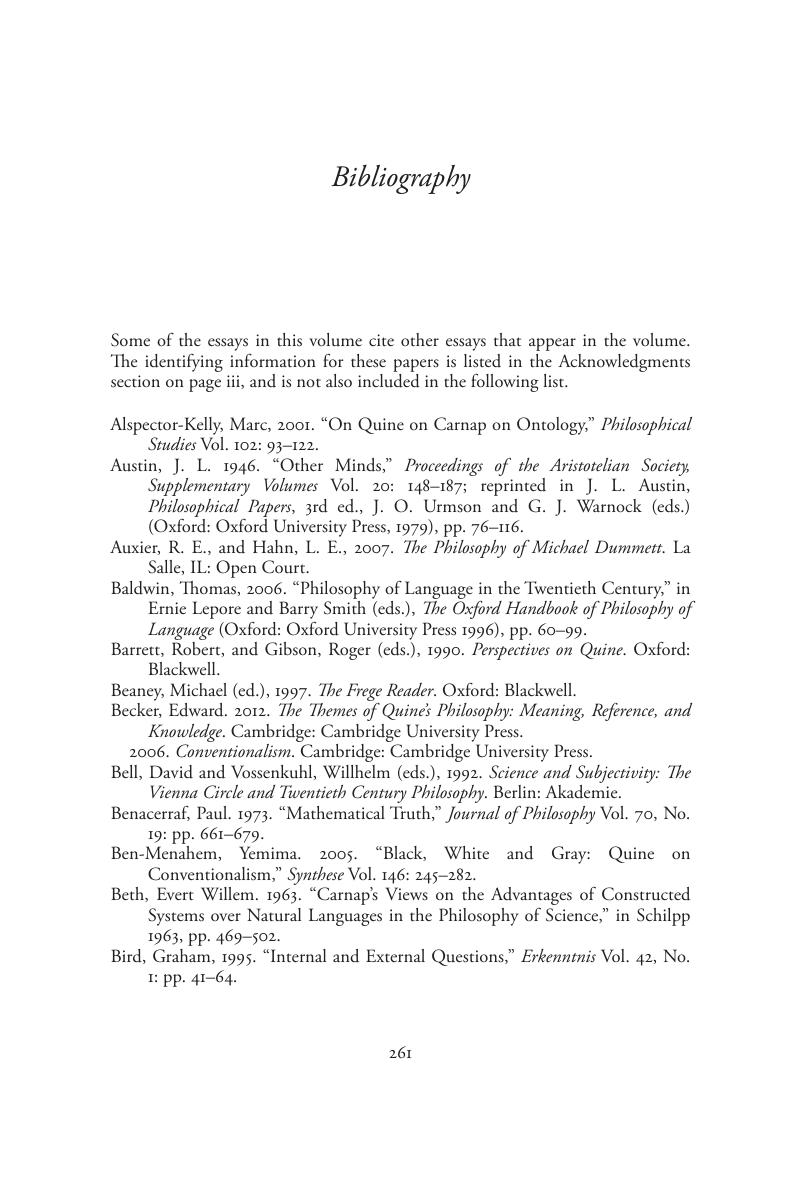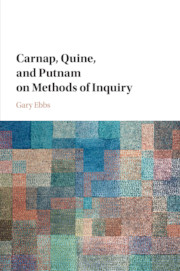Book contents
Bibliography
Published online by Cambridge University Press: 22 June 2017
Summary

- Type
- Chapter
- Information
- Carnap, Quine, and Putnam on Methods of Inquiry , pp. 261 - 272Publisher: Cambridge University PressPrint publication year: 2017



